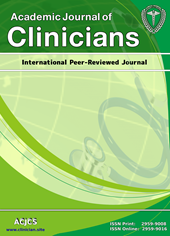Predictors of healing in Diabetic Patients with Trophic Ulcers at Lower Limbs
Keywords:
Diabetes Mellitus, Trophic ulcers, Lower limbs, PredictorsAbstract
The rapid increase in the prevalence of type 2 diabetes mellitus has prompted WHO experts to declare a pandemic of this disease. According to WHO experts, the number of people with diabetes should reach 380.0 million by 2025. All specialists, especially therapists and general practitioners, who usually diagnose diabetes mellitus, need to be fully aware of modern standards for treating the disease and preventing its complications. One of the most common and severe chronic complications of diabetes mellitus is lower limb damage, known as diabetic foot syndrome (DFS). Limb damage in patients with diabetes is the main cause of disability in these patients and causes serious socio-economic damage. Untimely diagnosis of diabetes mellitus and diabetic foot syndrome, as well as incorrect treatment tactics lead to complicated disease progression and limb amputations, which are actually performed every 30 seconds worldwide. Epidemiological studies of recent years leave no doubt about the need to develop measures to prevent and reduce the frequency of amputations in patients with diabetes, as well as to study and implement new methods of local treatment of ulcerative defects. The predictors of healing and unfavorable prognosis, especially for patients with a high risk of amputation remain relevant issues in the clinical practice of treating diabetic ulcers. All of the above determined the relevance of the problem, the purpose and objectives of this study. Therefore, this study’s objective is to identify the characteristics of the clinical phenotype of a patient with diabetes mellitus who has a trophic ulcer of the lower extremities and to establish the factors influencing the rate and likelihood of its complete healing.





